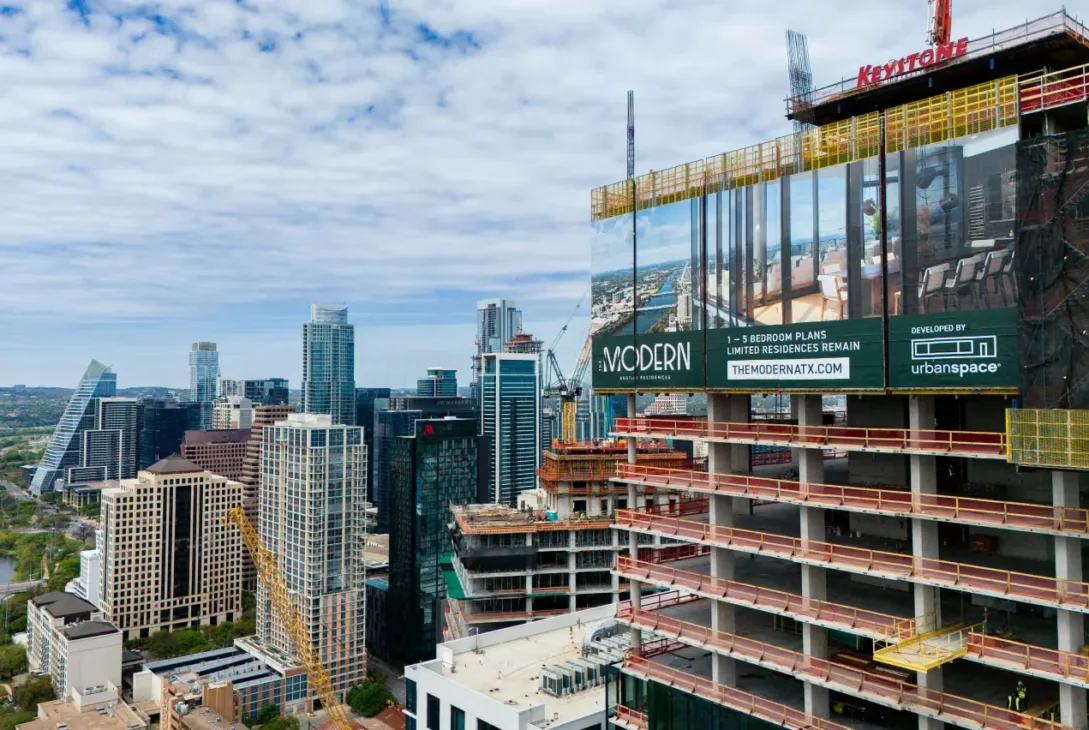Think 15% vacancy rates are only a problem for owners of office towers?
America has a serious housing shortage, but not for the type of apartments that real-estate investors have been building in record numbers.
The national vacancy rate for multifamily apartments reached 8% in the last quarter of 2024—higher than it was before the pandemic. Rising numbers of empty apartments seems odd considering the U.S. housing market is undersupplied by anywhere from 1.5 million to seven million units, depending on estimates.
Part of the problem is a herd mentality that saw real-estate developers pile into the same cities to build the same kinds of properties. Investors focused on constructing four-star and five-star units that command average monthly rents of $2,139.
There were sound financial reasons for this strategy: Rising construction and land costs mean developers need high rents to deliver acceptable returns. But the result is a glut of upmarket apartments that are beyond the budgets of many tenants. The vacancy rate for four-star and five-star units in the U.S. has hit 11.4% according to data from CoStar—double the rate of more affordable properties.
Sunbelt cities have a bigger oversupply of high-end apartments than coastal markets. Vacancy rates in Austin, Texas, have reached 15%, for example. Landlords need to offer generous concessions to persuade new tenants to move in, such as two or three months of free rent on a one-year lease. These sweeteners don’t show up as declines in headline rents, but they represent effective cuts of up to 25%.
Cities such as Boston and Chicago that investors largely left for dead during the pandemic are proving more resilient. New York’s vacancy rate is 2.8%, making it one of the tightest rental markets in the country as little new supply was built between 2021 and 2024. Rents are rising in many other coastal cities and the Midwest, where construction was muted.
Cities that were hollowed out in recent years by hybrid working are starting to recover. Apartment owner Equity Residential said on its latest earnings call that it noticed demand to rent in downtown Seattle has improved since Amazon ordered workers back to the office five days a week. The company sounded optimistic it can raise rents in San Francisco this year.
Landlords should be making a killing in the current housing market. The cost of a 30-year, fixed-rate mortgage is close to 7% again, leaving homeownership out of reach for many Americans.
The monthly mortgage payment and maintenance cost on a starter home is $1,091 more than the cost of renting the same property, according to John Burns Research and Consulting. Historically, the premium to own versus renting has been $233, so more people are forced to rent for longer.
New construction of high-end apartments is easing as developers hit the brakes until the existing glut is absorbed. But there hasn’t been an uptick in construction of the type of housing that is in real demand. In the last quarter of 2024, only 6,700 units with average monthly rents of $1,332 were under construction nationwide, compared with close to half a million higher-end apartments, based on CoStar data.
Many landlords think rents in their favorite Sunbelt cities will recover later this year as inward migration soaks up excess supply. The number of people moving to these markets still looks healthy, even if the flow has slowed dramatically from peaks seen during the pandemic. Austin currently has around 21,000 units under construction, or 6.5% of its total apartment inventory, according to an analysis by Sam Tenenbaum, head of multifamily insights at Cushman & Wakefield. If as many people move to the city in 2025 as did in 2024, it should only take a year to fill up the empty apartments.
But investors face another unwelcome source of supply. According to data from Princeton University’s Eviction Lab, the number of eviction notices filed in several popular Sunbelt markets such as Gainesville, Fla., Nashville, Tenn., Houston and Phoenix are well above 2019 levels. Eviction filings in Austin are now 36% above pre-Covid averages, which could release an additional 12,500 units onto the market and delay a return to rent growth.
The surge in evictions might turn out to be temporary, rather than a more serious sign that tenants are under financial stress. Unpaid rents aren’t flashing red at listed apartment stocks, and tenant retention is still unusually high.
But Sunbelt renters are definitely “concession shopping” at the moment, according to industry professionals—moving into brand new apartments to get two months of free rent but clearing out once their leases expire. Meanwhile, it seems that the cash cushions that lower and middle-income renters built up during the pandemic are used up.
Tenants in these markets, where housing used to be relatively affordable, may struggle to dig deeper when landlords try to raise the rent. A push into undersupplied parts of the country might be a wise hedge for investors. Even better for the crunched housing market would be if developers tackled the tough challenge of how to build affordable units profitably.
Last modified: January 11, 2025


